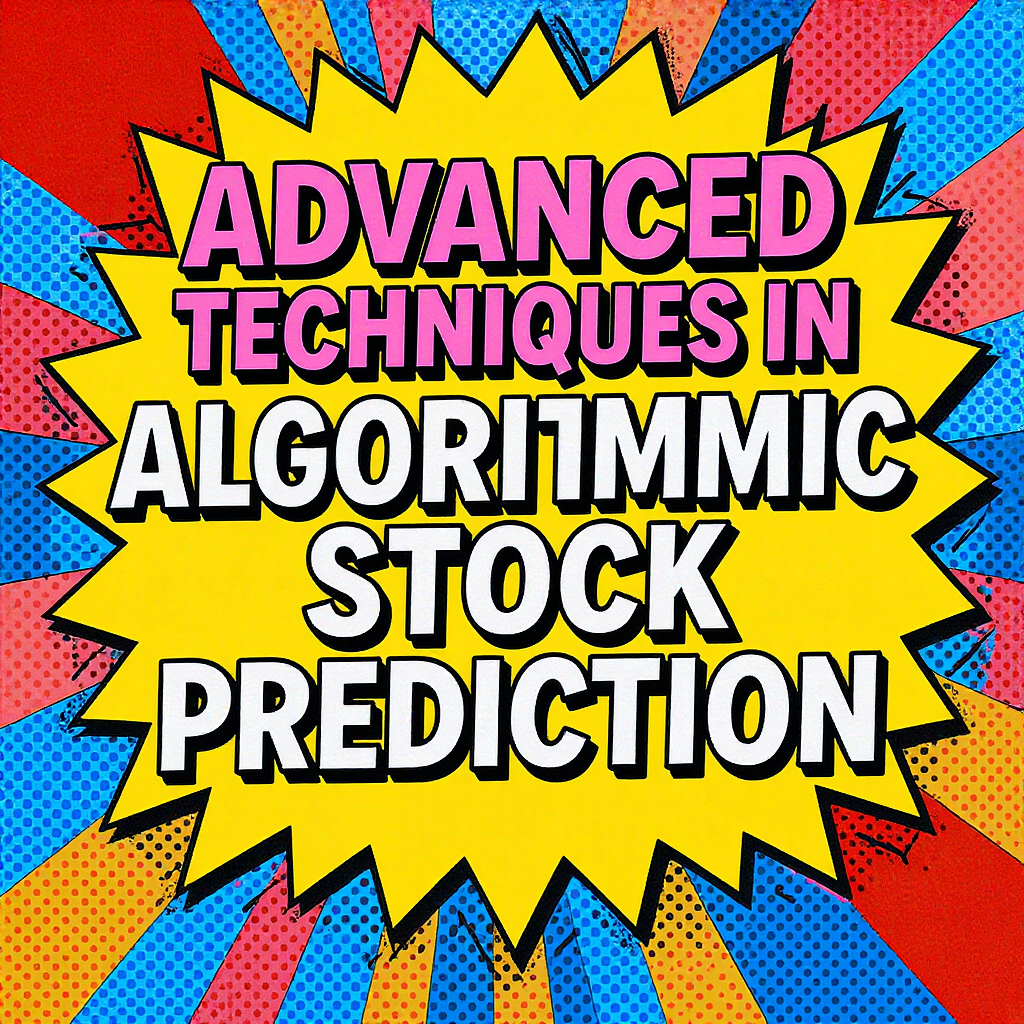Predicting stock prices with accuracy remains the holy grail of finance. While no method guarantees perfect foresight, advanced algorithmic techniques are pushing the boundaries of what’s possible. This article explores several sophisticated approaches beyond basic technical analysis, focusing on how these algorithms leverage vast datasets and complex mathematical models to improve stock price prediction. We will examine techniques that move beyond simple linear regressions and delve into the world of machine learning, deep learning, and sentiment analysis, highlighting their strengths and limitations in the context of stock market prediction. We will also discuss the crucial role of data preprocessing and feature engineering in achieving reliable results and the ethical considerations involved in deploying these powerful tools. Ultimately, we aim to provide a comprehensive overview of the cutting edge in algorithmic stock prediction, showcasing the potential and the pitfalls of these advanced methodologies.
Machine Learning for Stock Prediction
Machine learning algorithms, particularly supervised learning models, are increasingly popular for stock prediction. These algorithms learn patterns from historical stock data, including price, volume, and various technical indicators. Popular choices include Support Vector Machines (SVMs) which excel at identifying complex relationships in high-dimensional data, and Random Forests, which use an ensemble of decision trees to reduce overfitting and improve prediction accuracy. The process typically involves training the model on a historical dataset, validating its performance on a separate testing set, and then using it to predict future prices. However, the effectiveness of machine learning models is highly dependent on the quality and quantity of the training data, and careful feature engineering is crucial for optimal results. A poorly chosen feature set can lead to inaccurate or misleading predictions. Furthermore, the inherent volatility of the stock market means that even well-trained models can struggle to consistently outperform simple buy-and-hold strategies.
Deep Learning and Neural Networks
Deep learning, a subfield of machine learning, takes advantage of artificial neural networks with multiple layers to analyze complex, non-linear relationships within vast datasets. Recurrent Neural Networks (RNNs), especially Long Short-Term Memory (LSTM) networks, are particularly well-suited for time-series data like stock prices. LSTMs can capture long-term dependencies in the data, which are often crucial for accurate predictions. Convolutional Neural Networks (CNNs) can be used to extract features from images of candlestick charts or other visual representations of stock data. The ability of deep learning models to automatically learn complex features from raw data is a significant advantage, but they require substantial computational resources and expertise to train effectively. Moreover, the “black box” nature of deep learning can make it difficult to understand the reasoning behind the predictions, limiting their transparency and interpretability.
Sentiment Analysis and Alternative Data
Traditional stock prediction models often rely solely on quantitative data. However, incorporating qualitative information, such as news articles, social media posts, and financial reports, can significantly improve predictive power. Sentiment analysis techniques can automatically gauge the overall sentiment (positive, negative, or neutral) expressed towards a particular stock or the market as a whole. This sentiment data can then be combined with quantitative data to create a more comprehensive prediction model. Other alternative data sources include economic indicators, weather patterns, and even satellite imagery that can provide valuable insights into market trends and predict future price movements. The challenge lies in effectively integrating these diverse data sources and managing the increased complexity of the prediction model.
Data Preprocessing and Feature Engineering
The success of any algorithmic stock prediction model hinges on the quality of the input data. Thorough data preprocessing is essential, which includes handling missing values, smoothing noisy data, and standardizing features. Feature engineering involves creating new features from existing ones to improve the model’s performance. This could involve calculating technical indicators (e.g., moving averages, relative strength index), creating lagged variables, or using domain expertise to identify relevant variables. Effective feature engineering requires a deep understanding of both the data and the underlying financial markets. The table below demonstrates a simple example of feature engineering:
| Original Feature | Engineered Feature | Description |
|---|---|---|
| Closing Price | 5-day Moving Average | Average closing price over the past 5 days |
| Volume | % Change in Volume | Percentage change in volume compared to the previous day |
| Closing Price | Price Momentum | Difference between current closing price and closing price ‘n’ days ago |
Conclusion
Algorithmic stock prediction using advanced techniques like machine learning, deep learning, and sentiment analysis offers exciting possibilities for improving investment strategies. However, it’s crucial to acknowledge the inherent limitations and risks involved. While these methods can identify patterns and relationships in historical data, they cannot perfectly predict the future. Market volatility, unforeseen events, and the inherent complexity of financial markets make accurate long-term predictions challenging. The success of any algorithmic approach depends heavily on the quality of data, effective feature engineering, and a thorough understanding of the chosen algorithms. Furthermore, ethical considerations related to data privacy, potential market manipulation, and the responsible deployment of these powerful tools must be carefully addressed. While these techniques can enhance investment decision-making, they should be used judiciously as part of a broader investment strategy, not as a guarantee of financial success. It’s vital to remember that no algorithm can eliminate risk entirely in the unpredictable world of stock markets. Continuous learning, adaptation, and critical evaluation of results are paramount for leveraging these powerful techniques responsibly.
References
Investopedia: Machine Learning
Kaggle: Stock Price Prediction Datasets
Towards Data Science: Deep Learning for Stock Prediction
SSRN: Research Papers on Algorithmic Stock Prediction
Image By: Black Forest Labs






